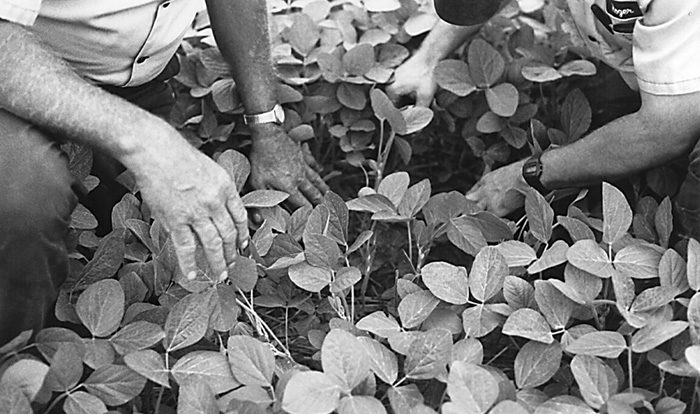Bill Mckibben believes in the many benefits of no-till. He’s put on numerous meetings for interested farmers. He promotes it to clients—but he does so with a realistic picture of the no-till conversion. “Some universities promote no-till but forget about minimum tillage,” he says. “We use it as a good transition from conventional tillage to no-till.”
This Bluffton, Ohio, crop consultant focuses on helping interested farmers move toward the ultimate goal of no-till. But he doesn’t want to give them any false hopes either. Making a drastic change from moldboard plowing to no-till can be difficult—and it’s not only because of the soil.
Getting Started
“What I tell clients is that there should be absolutely no one doing conventional tillage, but I will not say everyone should be doing no-till,” he says.
“Maybe they’re not at the point of no-till because of their equipment or soil fertility, but we all should be heading in that direction. How close you get to the no-till goal is completely up to the individual.”
McKibben says minimal tillage is an important tool in the no-till transition and definitely helps when new no-tillers would otherwise be taking yield cuts.
“I can’t expect my clients to take a 10 percent cut in yield when they’re in transition,” he says. “Everyone can no-till provided they transition properly. With minimum tillage, they are forced to deal with residue and learn how it affects weed control, nitrogen application and planting.
“If they can deal with these things, they’ll be able to no-till much easier. I wouldn’t be a very good crop consultant if I tell them to expect yield reduction. It’s my goal to keep yields up and help them switch successfully.”
No-Till Conversion Process. McKibben says there are four steps aspiring no-tillers should take before making the full switch. These steps, he says, will help each farmer understand their soil better, teach them to manage residue and let them become familiar with the proper application of nitrogen and the no-till process.
1 Test Your Soil
“By taking soil tests and checking calcium, magnesium and potassium levels, new no-tillers can check their soil balance,” he says. “You can’t take a guy with lousy fertility, throw him into a no-till situation and expect him to be successful.
“These guys need to make up their mind to make this system work. If they use consultants, extension people or veteran no- tillers, they will make it work. People think you can’t ever chisel after you start no-tilling. You can—to get the fertility up.”
2 Try Minimum Tillage
“I like to see straight points on chisel plows,” McKibben explains. “Have these farmers keep a fair amount of residue. It could be a matter of discing the ground, so they’re forced to deal with the residue.”
3 No-Till Soybeans Into Corn, Wheat Into Beans
“These rotations are very successful,” he says. “I give them something they can see so they can discover for themselves how things work. One thing that’s difficult for rookies to learn is you have to do this stuff on your best ground, not your worst.”
4 No-Tilling Corn.
“The real trick to see where you are in no-till is planting corn without taking a yield hit,” McKibben says. “Compare your no-till yields with minimum tillage. But you’ve got to watch soil compaction and the number of trips you make across the field.”
McKibben says once yields in the first field are comparable, you can feel free to no-till the rest of your fields. This is true if soil sampling has been done and fertility and organic matter is adequate.
Assessing Soils For No-Till
McKibben emphasizes the importance of initial soil tests on potential no-till ground. Test the lime, calcium and magnesium balance to make sure they are at a desirable range.
“You can’t expect to apply lime over the top of your soil when you’re no-tilling and get a big turnover of your soil calcium. It’s not going to happen,” he says. “It’s a slow process. When we initially shift into no-till, we tend to run into trouble with fertilizer when weather conditions turn dry. As long as you have surface moisture, you can have roots feeding on that fertility.”
McKibben says a key area in making the transition to no-till is organic matter. Doubling the organic matter in any field, he says, can quadruple the water capacity. This means a lack of organic matter can lead to water problems. “Once you’ve got organic matter, don’t lose it,” he says.
No-Tillage Goals
McKibben says two goals will ensure no-till success.
- Maximize your water infiltration rate. “No-till tends to do this while leaving residue on the surface,” he says.
- Maximize your water percolation rate. “If you don’t mechanically take out compaction before you start to no-till, you won’t have good percolation,” he says.
No-till can work for nearly everyone and McKibben’s job is to see that those who are willing to put in the time and effort will be successful. But he’s not the only one who can promote no-till to interested conventional farmers. Anyone can—including you.







Post a comment
Report Abusive Comment